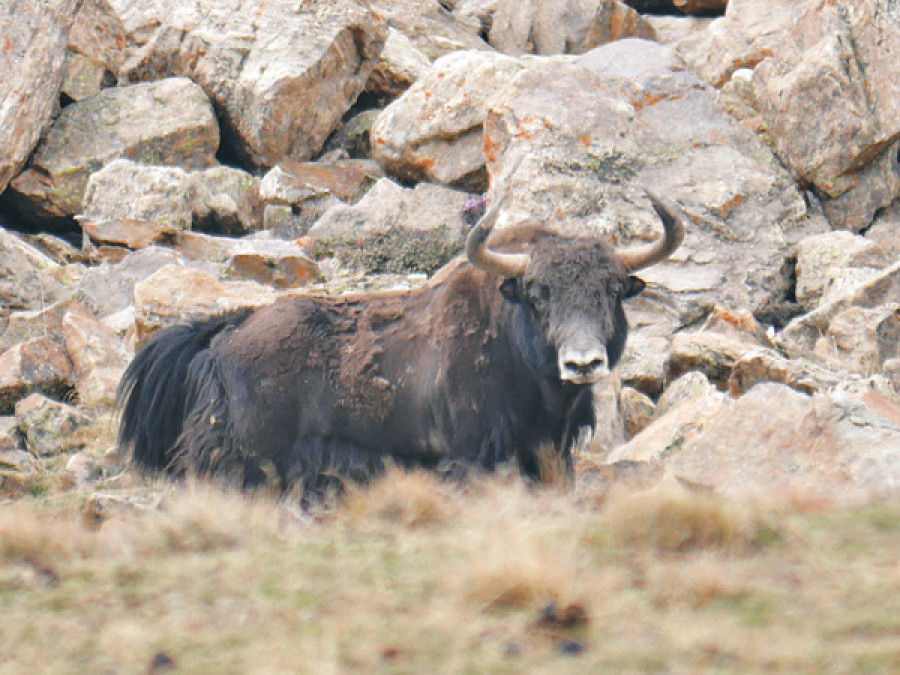Miscellaneous
‘Extinct’ wild yak found in Humla: Study
A wild yak, thought to be extinct almost five decades ago from high mountainous region in Nepal, has been spotted by a team of researchers for the first time in a remote area of Humla distri
Pragati Shahi
The first-ever rare photo of the wild yak, locally known as Jungali Chauri Gai, taken in Limi village, Humla on June 11 last year, was verified last Thursday by the Natural History Museum, which specifies in identification of any museum specimens in the country.
Until last year, the scientists and conservationists had not seen the lumbering and hairy creature anywhere in the country since the 1970s. Though no specific study has been carried out to determine the number and presence of wild yaks, the highland areas in Upper Mustang, Khumbu and Humla were considered to harbour the wild yak population before the 70s as the remains of these creatures, including skulls, horns and hides, are still preserved by the local communities.
Although locals claimed to have spotted wild yaks in Humla and other highland areas, no such creature had been sighted in almost five decades, Executive Director at Friends of Nature and team leader Raju Acharya said, while sharing the findings of the research during a programme in the Capital on Monday.
“The rediscovery of the rare wild yak is a great achievement for us. We hope this could help draw attention of the concerned bodies towards detailed research studies on historic wildlife,” he said.
Experts blame overhunting and depletion of pasturelands and domestication of other mountain livestock for the decimation of its population, leading this species towards extinction not only in Nepal, but also in China and India—the other two habitats of these globally threatened species.
During the course of their research on wolf and red fox, the team led by Acharya collected the remains that were believed to be linked with the wild yak such as pugmarks, body parts and dung from various sites in the district in 2013. However, it was only in June 2014 that the team could capture the yak in the wild on camera.
This species used to be in abundance until the 13th-18th centuries throughout the Tibetan Plateau, including in China (Gansu, Sichuan, Xinjiang, Tibet, Qinghai), northern India (Ladak) and Nepal, according to various international studies and independent research works. However, the recent studies suggest that the wild yak is already extinct in both Nepal and Bhutan and now found in their main population in China and some parts of India. Compared to their domesticated counterparts, wild yak are larger in size and weigh between 500-550 kg.




 18.12°C Kathmandu
18.12°C Kathmandu










